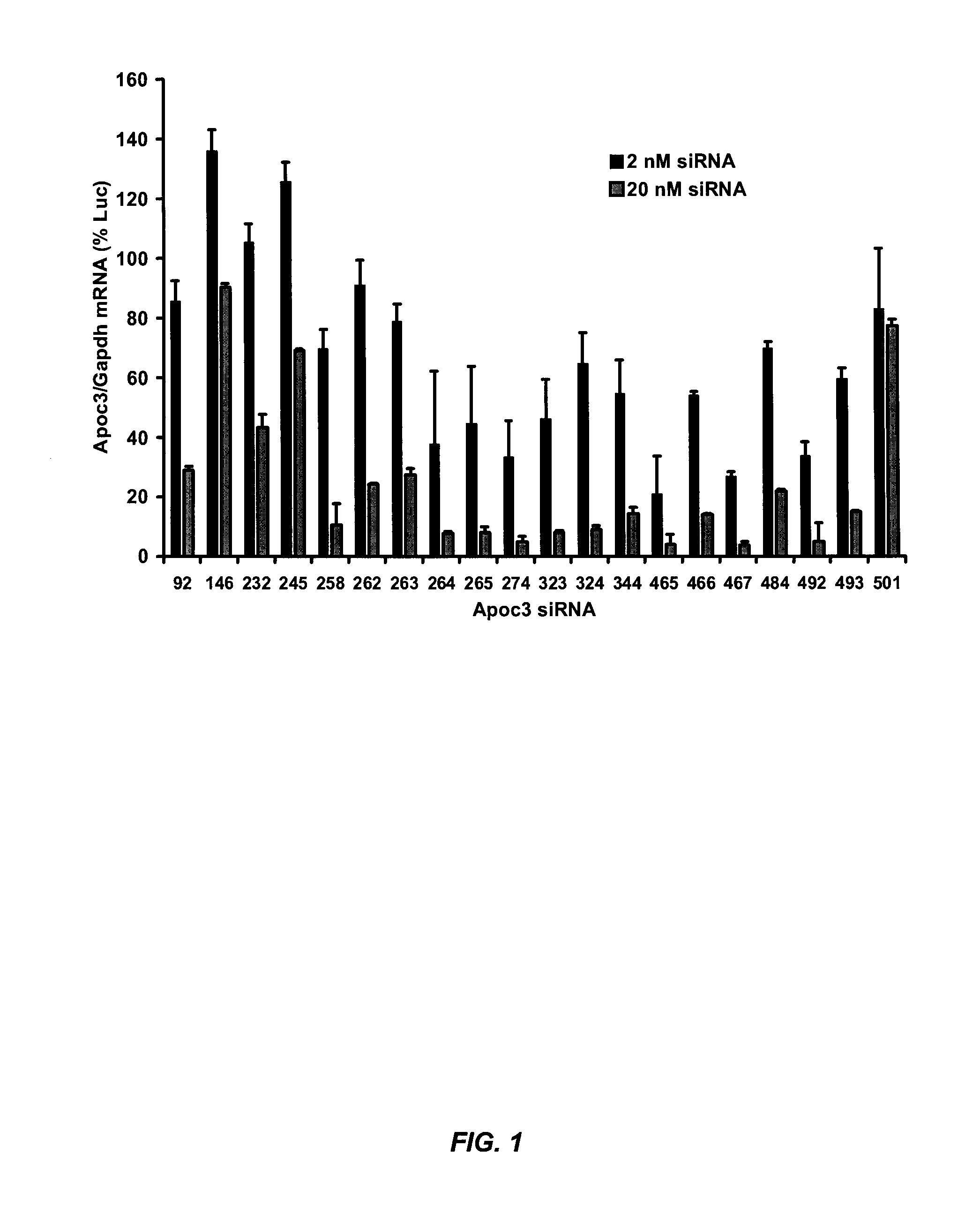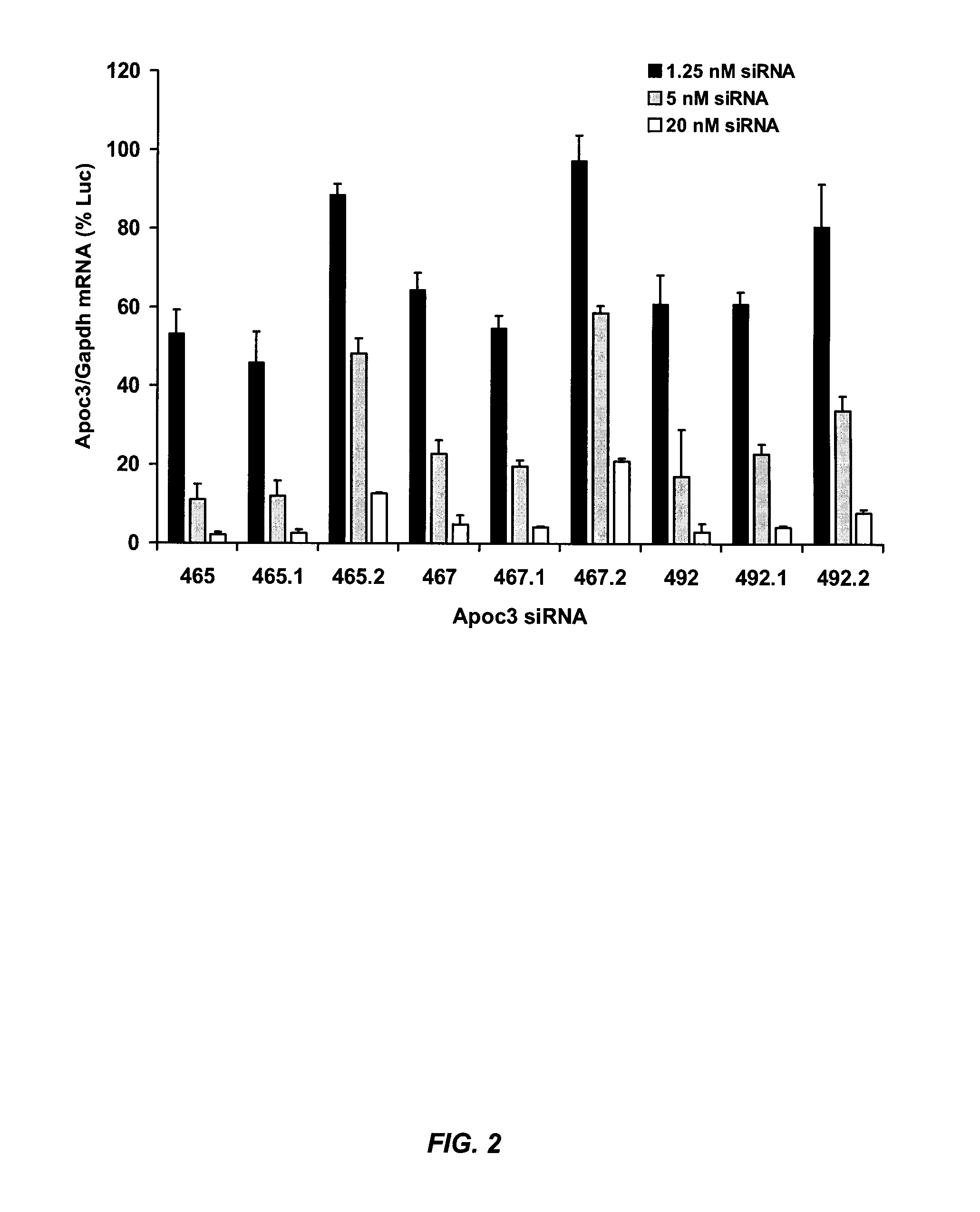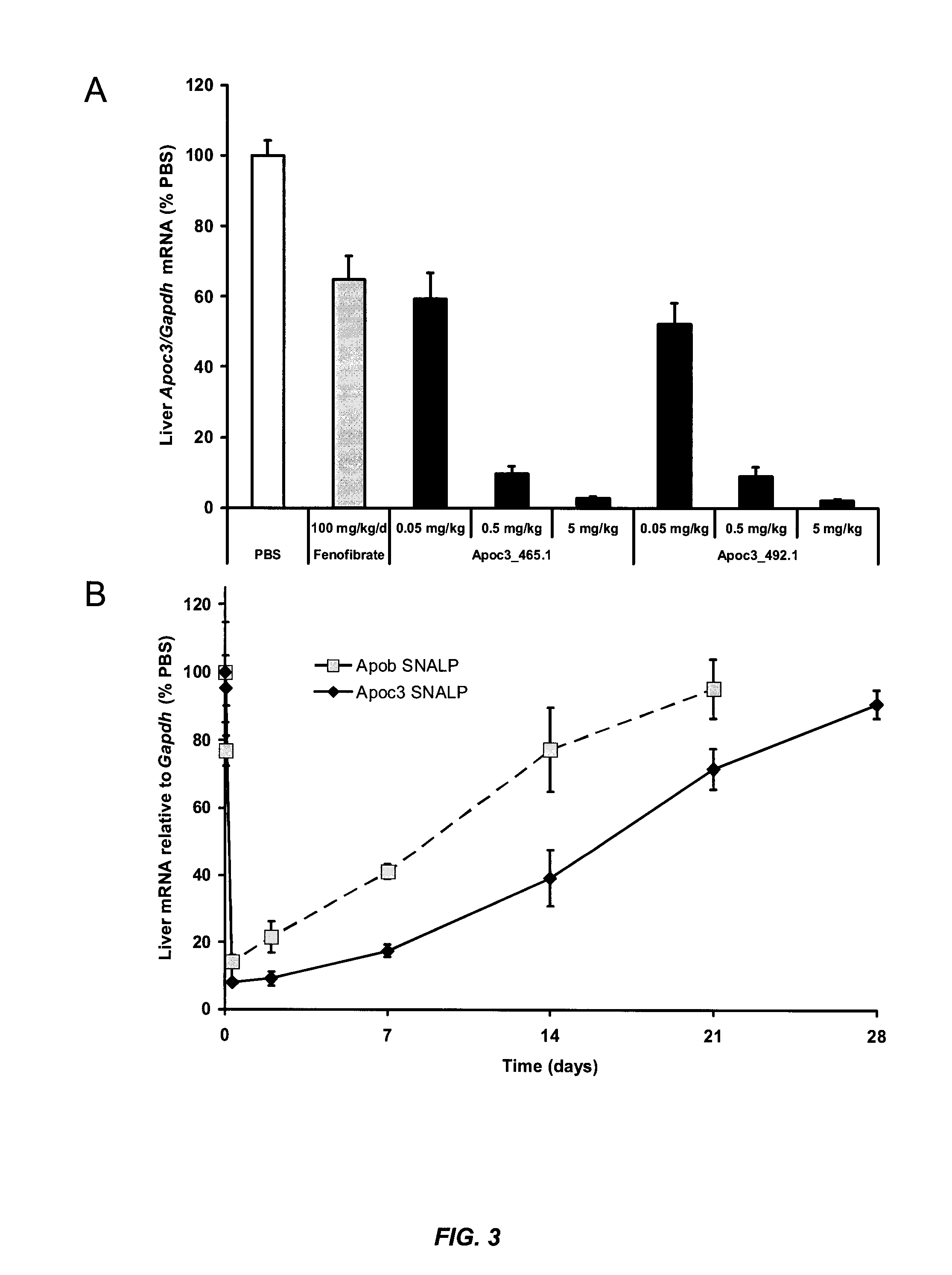Compositions and methods for silencing apolipoprotein c-iii expression
a technology of apolipoprotein ciii and composition, which is applied in the field of composition and method for silencing apolipoprotein ciii expression, can solve the problems of severe restriction of the flow of oxygen-carrying blood to the myocardium, and achieve the effects of reducing hyperlipidemia, delaying the onset of hyperlipidemia, and reducing hyperlipidemia
- Summary
- Abstract
- Description
- Claims
- Application Information
AI Technical Summary
Benefits of technology
Problems solved by technology
Method used
Image
Examples
example 1
Exemplary siRNA Molecules Targeting APOC3
[0392]Table 7 provides non-limiting examples of siRNA molecules that are suitable for modulating (e.g., silencing) APOC3 gene expression. In some embodiments, the sense strand comprises or consists of one of the target APOC3 sequences set forth in Table 7. In related embodiments, the sense strand comprises at least 15 contiguous nucleotides (e.g., at least 15, 16, 17, 18, or 19 contiguous nucleotides) of one of the target APOC3 sequences set forth in Table 7. In other embodiments, the antisense strand comprises or consists of one of the antisense strand sequences set forth in Table 7. In related embodiments, the antisense strand comprises at least 15 contiguous nucleotides (e.g., at least 15, 16, 17, 18, or 19 contiguous nucleotides) of one of the antisense strand sequences set forth in Table 7. In further embodiments, the antisense strand specifically hybridizes to one of the target APOC3 sequences set forth in Table 7.
TABLE 7siRNA sequences...
example 2
Stable Nucleic Acid-Lipid Particle-Mediated Silencing of Apolipoprotein CIII Reduces Plasma Triglycerides in Mice
[0394]This example illustrates that administration of stable nucleic acid-lipid particles (SNALP) containing fully encapsulated siRNA targeting the Apoc3 gene to mice resulted in reductions in hepatic Apoc3 mRNA levels, plasma triglycerides, and plasma cholesterol levels, without an increase in hepatic triglycerides. No measurable immune response was induced with these formulations, minimizing the potential for nonspecific effects in models of chronic inflammatory disease, such as atherosclerosis.
Introduction
[0395]Apolipoprotein CIII (apoCIII) is implicated in atherogenesis through its association with hypertriglyceridemia and induction of endothelial dysfunction. This example shows that nucleic acid-lipid particles (e.g., SNALP) facilitate RNAi-mediated silencing of apoCIII and other targets thought to be “non-druggable” with conventional medicines. Studies of siRNA-base...
example 3
Silencing of Human APOC3 Expression Using RNA Interference
[0421]This example provides an in vitro characterization of APOC3 siRNA activity in human cells. ApoCIII is an important regulator of lipoprotein metabolism that has been implicated in the progression of atherosclerosis (1) through its association with hypertriglyceridemia (2-5) and its direct induction of endothelial dysfunction (6-7). A panel of 20 APOC3 siRNAs were designed and screened for silencing activity in the human HepG2 hepatocellular carcinoma cell line. Treatment of HepG2 cells with many of these siRNAs caused a dose-dependent reduction in the levels of human APOC3 mRNA (FIG. 8). In particular, hAPOC3—260 was identified as the most potent human APOC3 siRNA. Additional potent APOC3 siRNAs include hAPOC3—312, hAPOC3—54, hAPOC3—266, hAPOC3—268, hAPOC3—287, and hAPOC3—427. Of these siRNAs, hAPOC3—260, hAPOC3—266, hAPOC3—268, and hAPOC3—427 are most likely to be cross-reactive in other primates based on an antisense s...
PUM
| Property | Measurement | Unit |
|---|---|---|
| Tm | aaaaa | aaaaa |
| temperatures | aaaaa | aaaaa |
| temperatures | aaaaa | aaaaa |
Abstract
Description
Claims
Application Information
 Login to View More
Login to View More - R&D
- Intellectual Property
- Life Sciences
- Materials
- Tech Scout
- Unparalleled Data Quality
- Higher Quality Content
- 60% Fewer Hallucinations
Browse by: Latest US Patents, China's latest patents, Technical Efficacy Thesaurus, Application Domain, Technology Topic, Popular Technical Reports.
© 2025 PatSnap. All rights reserved.Legal|Privacy policy|Modern Slavery Act Transparency Statement|Sitemap|About US| Contact US: help@patsnap.com



